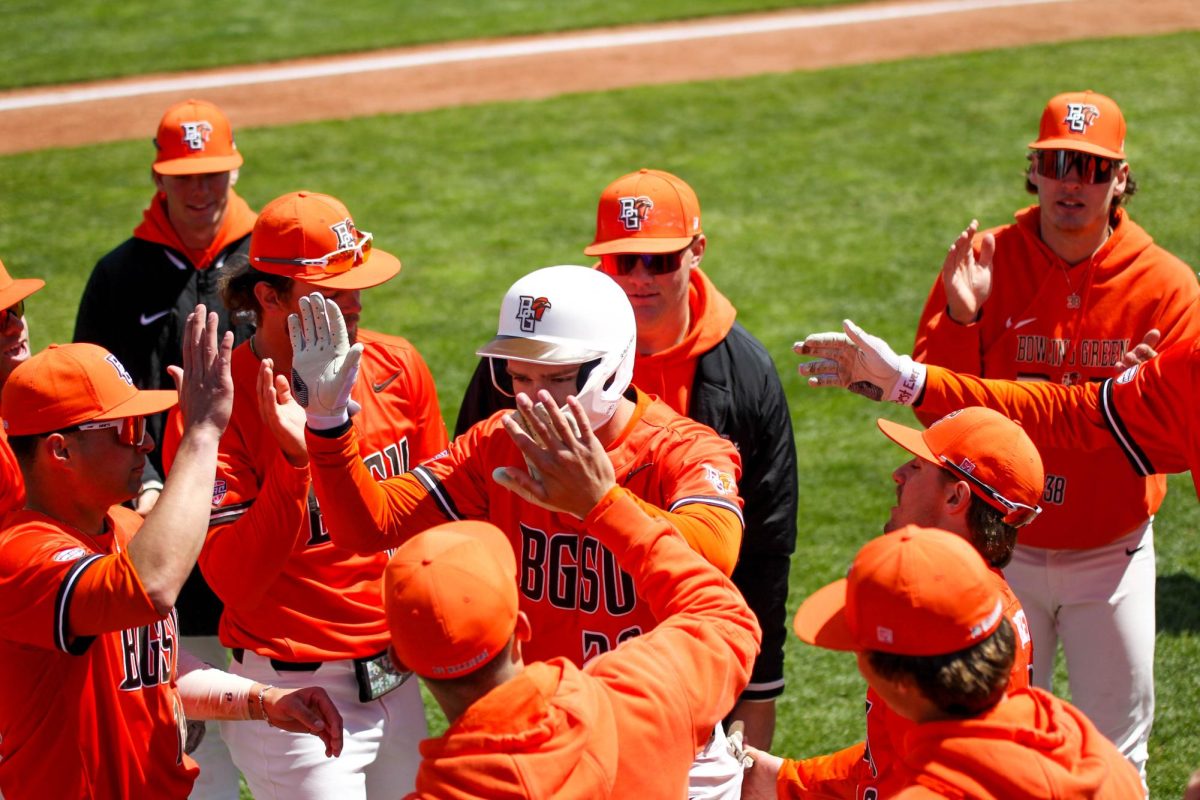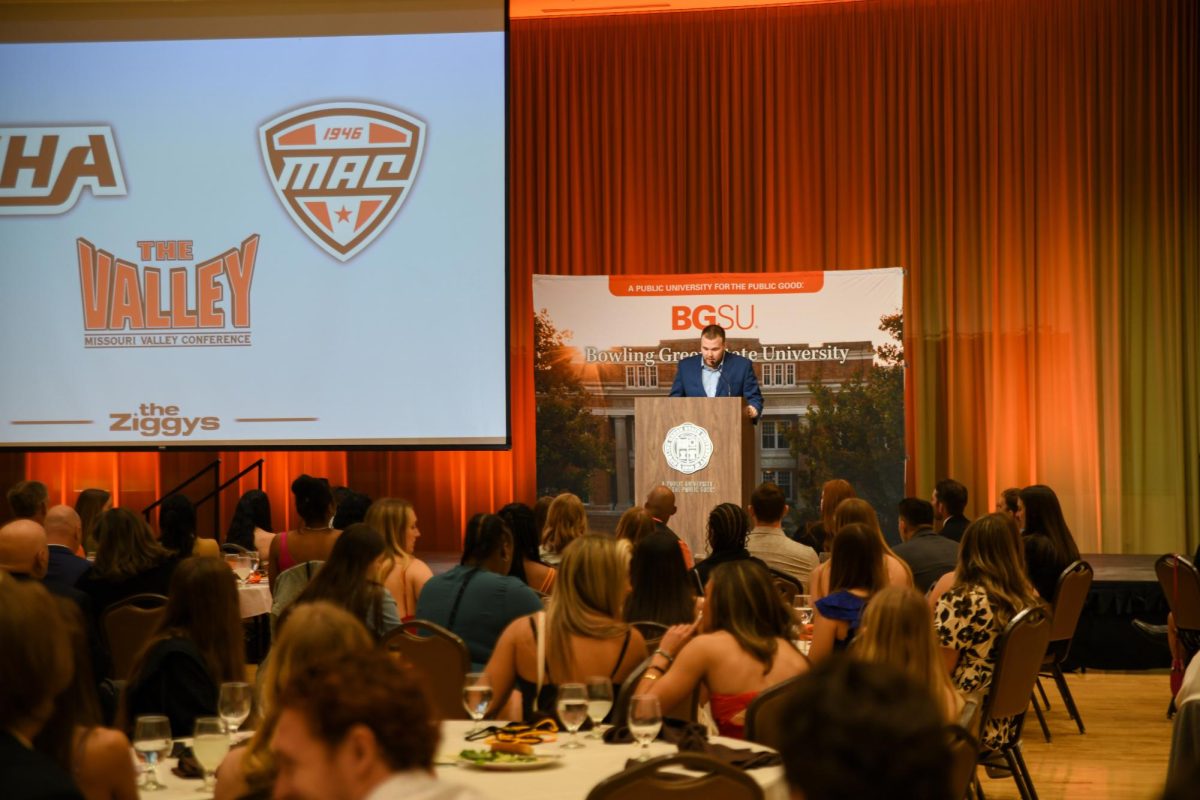By looking back just 11 years through the history of Bowling Green, an event can be found in 1993 that sparked student response to an important city issue, prompting them to call for change and run for local office.
Students who took the initiative then to run for city council — in another battle between students and the city — would like to help light the path to success for those who may run later this year.
In January 1993, the BG News broke a three-month long investigative story, which showed that for the previous 20 years the city’s ward lines had been incorrectly drawn.
In 1973, Bowling Green’s four wards were drawn based on voter registration numbers instead of the city’s population statistics. University students were undercounted because they traditionally register to vote in fewer numbers than Bowling Green’s permanent residents.
Back then University students made up more than half of the city’s population, but only one-third of its registered voters. This resulted in 47 percent of the city’s population lying in Ward 1, which encompassed the University’s residence halls.
Lawyers and city government experts consulted by the BG News in 1993 confirmed that the city’s ward map was illegal, and needed to be redrawn.
Like a firecracker, the debate over redistricting the wards exploded on the east side of town, according to Todd Kleismit, a University alumnus who ran for city council in 1993.
“It was a very hot issue,” Kleismit said, “especially on the east side of the city there was a lot of attention.”
The excitement generated over potential change in Bowling Green prompted five University students to run for city council in November 1993.
Sam Melendez, who ran as an Independent for the Ward 1 position, remembers how the BG News investigative story prompted him to try and make a difference in the city.
“That article was what made me run,” Melendez said. “It spurned a lot of interest in students about city government. Before that article I didn’t really feel a connection to the community. It really got me interested.”
Scott DeKatch, who ran as an Independent for one of the at-large positions, remembers the wealth of optimism that students running for council had about the possibility to shape their community.
“Back then we really thought we could win an election by knocking on people’s doors,” DeKatch said. “Our flyers were made on purple paper at Kinko’s while the other guy had big glossy signs.”
But all the excitement in the world still couldn’t aid the student-candidates in knowing where to focus their energy, and because of that the election day turnout was a disappointment.
Only 316 of 3,695 registered on-campus voters cast their ballot in Ward 1. Kleismit won the city council seat, but beat Todd Wesseler — a student — by just 14 votes. Melendez finished third in Ward 1.
In Ward 2, where a majority of students live off-campus, the margin of victory was 37 votes.
At the time, DeKatch and the other candidates were shocked that so few students took the election and redistricting seriously on election day.
“I remember thinking it was so strange that such a small number of students voted,” DeKatch said, “because we worked our asses off.”
In retrospect, candidates from 1993 hope that University students take seriously the relationship they have with the community, even if you don’t live here year-round.
“Some people hear the word ‘zoning’ and their eyes glaze over,” Kleismit said, “but it is an important issue that affects your lives in many ways.”
In addition, Melendez emphasized that if candidates running in November 2005 do only one thing, they convince their peers to visit the polls.
“Just work hard to get out the vote,” Melendez said. “If students realize these issues are important, and they are made relevant to their lives, then they’re going to vote.”
Students and residents grappling with questions today about potential changes to BG’s zoning law can rest assured that other college towns have faced the same issue.
The zoning laws of Oxford, Ohio — home of Miami University — have allowed four unrelated people to live together in a house “ever since there’s been a definition of family,” according to Dan Johnson, Oxford’s City Planner.
To help control the city’s parking situation, a permit system has been implemented to limit the number of cars that can park along the street.
A parking garage was also built in downtown Oxford to provide parking space for shoppers. Within the garage spaces can be leased for residents to park their cars who live within walking distance.
In Michigan during the early 1990s a court decision ruled that provisions must be made to accommodate “functional” families, or groups of people like students who wish to live together, but are not necessarily a real family.
The zoning laws of Mount Pleasant, Mich. have accommodated Central Michigan University students by requiring one parking space be made available for each occupant of an off-campus house.
“It seems to be working,” said Tony Kulick, Mount Pleasant’s director of Planning and Community Development.
Up until now, Bowling Green’s city planners and administration have not been asked to reevaluate the 1975 zoning ordinance, which limits the number of unrelated people who can live in a house to three, according to Senior Planner Ken Taylor.
“I’ve only been here three years, but there’s never been a push for it,” Taylor said. “I’ve never seen anything come across any desk asking for a redefinition of single family dwelling.”
In Ward 1, which comprises much of the University’s on-campus residence halls, constituents have yet to come forward and voice their opinions on the zoning ordinance, Rep. Sarah Tomashefski said.
“Students have to be involved in city government,” Tomashefski said. “The fact of the matter is no one has come to city council to talk about it [zoning], and no one has contacted me to talk about it.”
Because the zoning ordinance is ultimately a legislative issue, the potential for change is within reach of all city residents, especially students. The main thing holding the process back is a lack of participation by students, said Matt Reger, prosecuting attorney for the city.
“If the students got involved and wanted to push the issue they could,” Reger said. “City council is only going to listen to those who are really interested, and students seem to be pretty apathetic.”


















